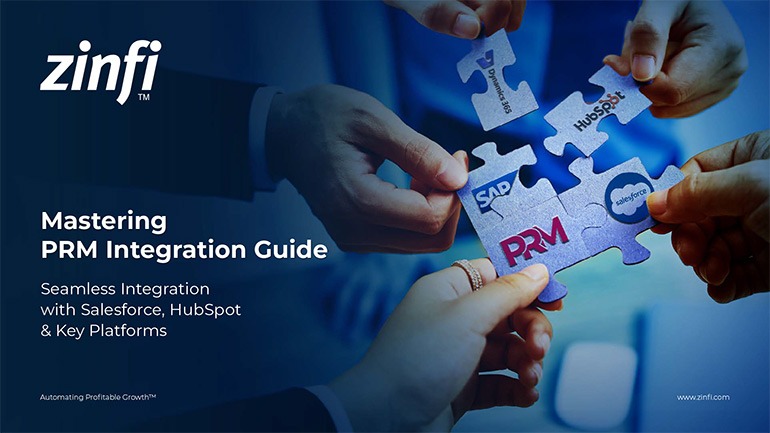Glossary - How to - Strategic Alliances
How to Build Strategic Alliances?
Introduction
What Are Strategic Alliances?
Building strategic alliances involves forming mutually beneficial partnerships between two or more organizations to achieve common goals. These partnerships range from joint ventures and licensing agreements to co-marketing and supplier-buyer relationships. Companies leverage strategic alliances to access new markets, share resources, and enhance their competitive advantage.
In today’s highly interconnected business environment, strategic alliances are crucial for growth and expansion. Whether it is a technology company collaborating with a hardware manufacturer or a pharmaceutical firm partnering with a research institution, strategic alliances help businesses achieve greater efficiencies and market reach.
Importance in Partner Relationship Management (PRM)
Strategic alliances are integral to Partner Relationship Management (PRM), enabling businesses to streamline operations, optimize partner engagement, and enhance value creation. PRM automation tools help organizations manage partnerships effectively by providing data-driven insights, collaboration platforms, and streamlined communication channels. Businesses leveraging PRM technology can track performance metrics, ensure alignment with strategic goals, and maximize partnership success.
Key Takeaways:
Identifying the Right Partners:
Selecting the right strategic partner is crucial for long-term success. Consider the following factors:
- Market Alignment: Ensure the partner operates in a complementary industry.
- Shared Vision and Goals: Aligning strategic objectives increases the likelihood of a successful collaboration.
- Cultural Compatibility: Organizational values and work ethics should be in sync.
- Resource Synergy: Partners should contribute unique strengths, such as technology, market access, or expertise.
Establishing Clear Objectives:
Defining clear goals ensures both parties understand the purpose and expectations of the alliance. Objectives should be SMART (Specific, Measurable, Achievable, Relevant, and Time-bound) and include:
- Revenue growth targets
- Market expansion plans
- Innovation and product development goals
- Cost reduction strategies
Developing a Structured Agreement:
A well-defined agreement outlines each partner’s responsibilities, rights, and obligations. Key elements include:
- Legal and Financial Terms: Revenue-sharing models, intellectual property rights, and liability clauses.
- Governance Structure: Decision-making processes and conflict resolution mechanisms.
- Performance Metrics: KPIs to measure the success of the alliance.
- Exit Strategies: Conditions under which the alliance will dissolve.
Leveraging PRM Technology for Optimization:
PRM platforms enable organizations to:
- Automate partner onboarding and management processes.
- Track performance metrics and ROI.
- Enhance collaboration through shared dashboards and communication tools.
- Streamline contract management and compliance tracking.
Continuous Evaluation and Adaptation:
Regular assessment ensures the alliance remains aligned with strategic objectives. Best practices include:
- Conducting periodic performance reviews.
- Identifying areas for improvement.
- Adapting to changing market conditions and customer demands.
- Reinforcing commitment through ongoing communication and trust-building initiatives.
Summary of Key Takeaways:
Building strategic alliances requires careful partner selection, well-defined objectives, structured agreements, and continuous evaluation. Leveraging PRM technology enhances collaboration and operational efficiency, leading to sustainable business growth.
Key Examples:
- Automotive Manufacturing: Automakers collaborate with technology companies to develop autonomous vehicles and electric car solutions, combining manufacturing and software development expertise.
- Consumer Electronics: Tech companies form alliances with chipset manufacturers to improve product performance and innovation.
- Energy Production: Renewable energy firms partner with government agencies and private investors to fund and deploy sustainable energy projects.
- Financial Services: Banks and fintech startups collaborate to enhance digital banking solutions, providing customers with seamless and secure financial services.
- Food and Beverage: Large food brands work with local suppliers to ensure ethical sourcing and high-quality ingredients, strengthening supply chain transparency.
- Healthcare Services: Hospitals and pharmaceutical companies form alliances for research and development, leading to advanced medical treatments and therapies.
- Information Technology: Software firms partner with cloud service providers to expand data storage and computing capabilities, offering scalable solutions to clients.
- Pharmaceutical Development: Biotech firms and research institutions collaborate to accelerate drug discovery and bring innovative treatments to market.
- Retail Industry: Retailers build alliances with logistics companies to enhance supply chain efficiency and deliver goods faster to customers.
- Telecommunications: Telecom operators partner with content providers to offer bundled services, such as internet, streaming, and mobile plans, improving customer experience.
Conclusion:
Building strategic alliances is a powerful way for businesses to expand their market reach, innovate, and enhance operational efficiencies. Organizations can create successful and sustainable partnerships by identifying the right partners, setting clear objectives, leveraging PRM technology, and continuously evaluating performance. As industries continue to evolve, the ability to form and manage strategic alliances will remain a key competitive advantage.
Associated Keywords:
- Strategic Partnership Management
- How to Create Business Alliances
- Best Practices for Corporate Alliances















